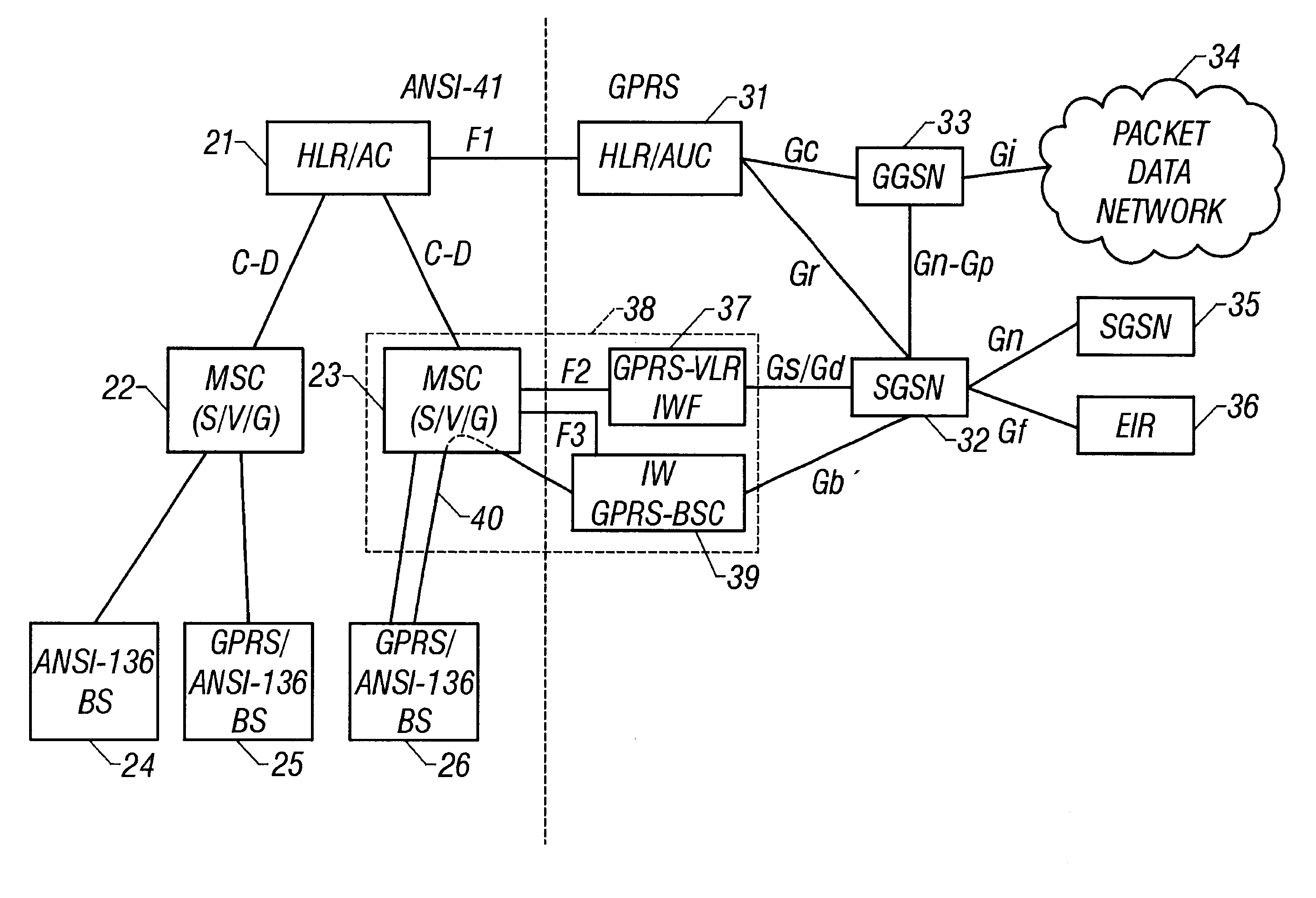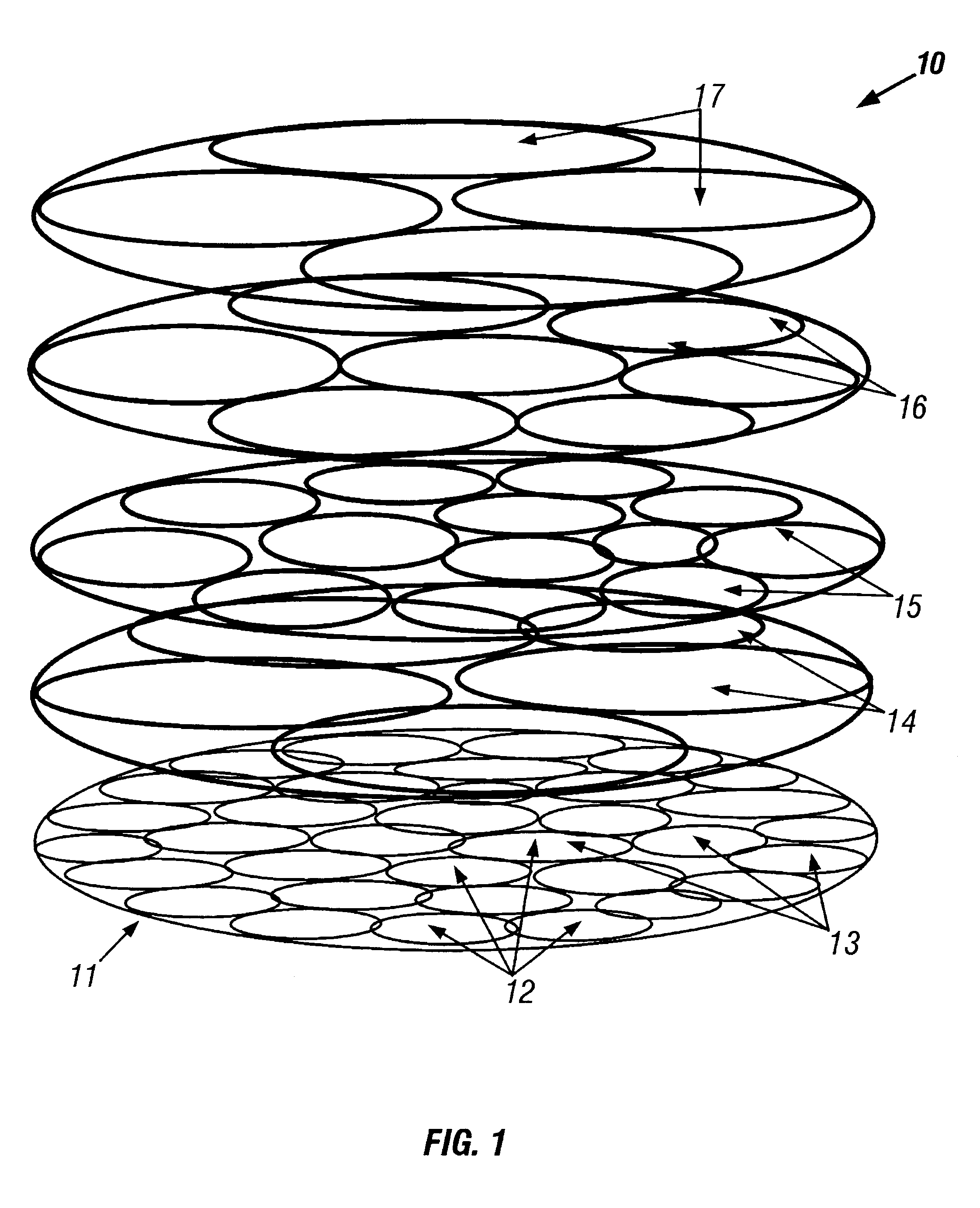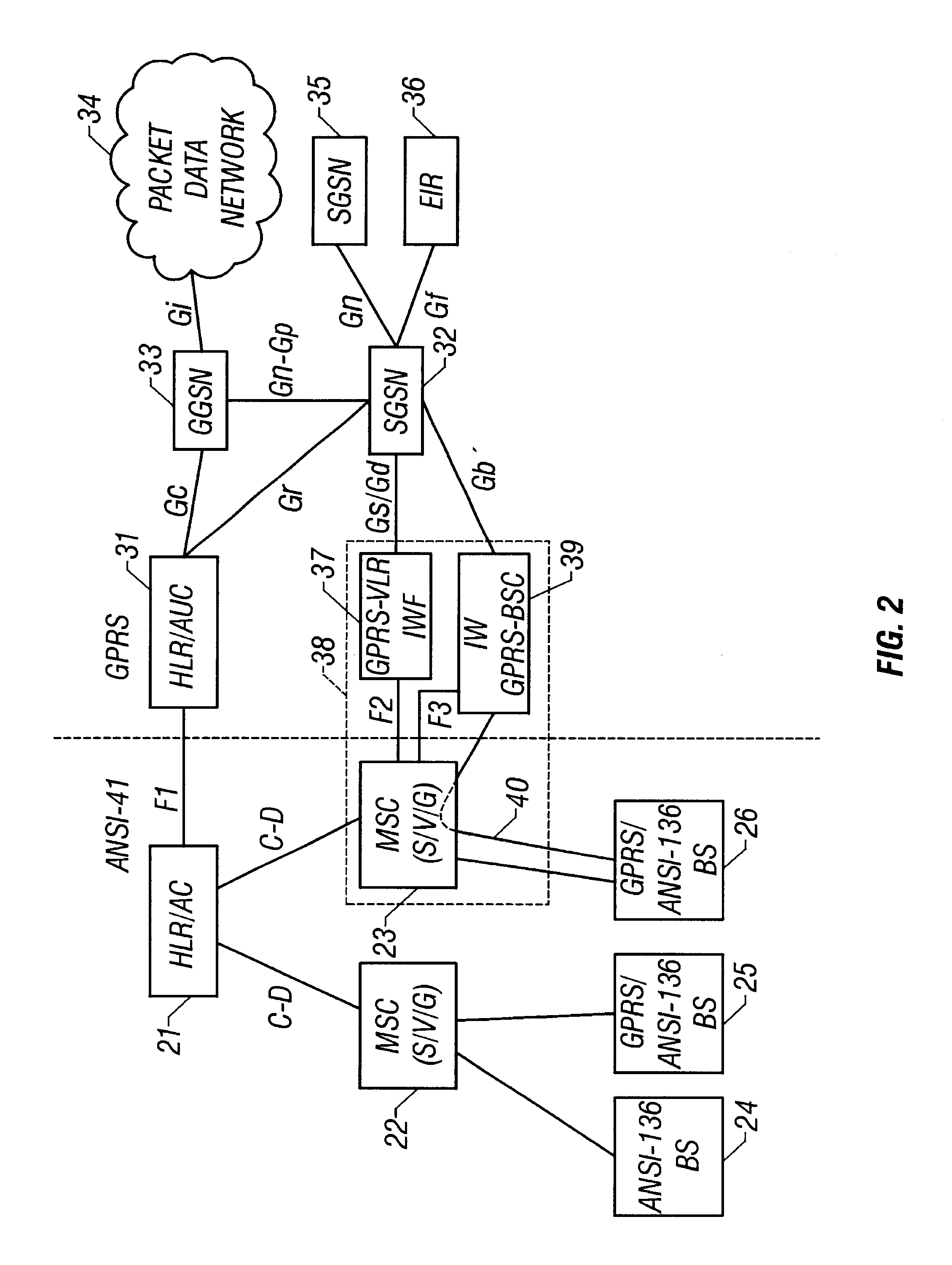Integrated radio telecommunications network and method of interworking an ANSI-41 network and the general packet radio service (GPRS)
a radio telecommunications network and integrated technology, applied in the field of telecommunication systems, can solve the problems of not meeting the interworking requirements of radio telecommunications networks, operators cannot benefit from the advantages and flexibility, and leave unused bandwidth for other services/users
- Summary
- Abstract
- Description
- Claims
- Application Information
AI Technical Summary
Problems solved by technology
Method used
Image
Examples
first embodiment
FIG. 2 is a simplified block diagram of an integrated GPRS / ANSI-41 network according to the present invention. On the ANSI-41 side of the network, there is an ANSI-41 Home Location Register / Authentication Center (HLR / AC) 21 which is connected by a C-D interface to MSC / VLRs 22 and 23. The MSC / VLRs are illustrated to be either Serving, Visitor, or Gateway (S / V / G) MSCs. The MSC / VLRs, in turn, are connected to Base Stations (BSs) 24-26. Within the ANSI-41 network, access to the GPRS packet data network may be provided over a subset of a MSC / VLR's service area; therefore, FIG. 2 shows MSC / VLR 22 controlling one standard ANSI-136 base station and one GPRS / ANSI-136 base station. BS 24 is shown to be an ANSI-136 base station while BS 25 and BS 26 are shown to be GPRS / ANSI-136 base stations. The GPRS / ANSI-136 base stations are ANSI-136 base stations that are GPRS capable.
On the GPRS side, there is a GPRS Home Location Register / Authentication Center (HLR / AUC) 31 which is connected by a Gr int...
second embodiment
FIG. 3 is a simplified block diagram of an integrated GPRS / ANSI-41 network according to the present invention. In this embodiment, the GPRS-VLR IWF 37 is integrated with the SGSN 32 on the GPRS side of the interface. The IW GPRS BSC 39 is associated with the ANSI-41 network, and may be implemented with the MSC / VLR 23. The functionality described in relation to FIG. 2 remains the same.
third embodiment
FIG. 4 is a simplified block diagram of an integrated GPRS / ANSI-41 network according to the present invention. In this embodiment, there is no F1 interface between the ANSI-41 HLR / AC 21 and the GPRS HLR / AUC 31. By modifying the ANSI-41 signaling, the ANSI-41 authentication center is informed upon initial registration and location update that the mobile station is making access on the GPRS network. The ANSI-41 HLR / AC may then defer authentication to the GPRS network until the mobile station changes back to the circuit switched network. When the mobile station makes access on the GPRS network the SGSN 32 is notified. If it is a location update type of access, the SGSN initiates the location update signaling to the associated ANSI-41 circuit switched Gateway MSC 41. The Gateway MSC, in turn, performs the location update towards the HLR / AC 21 with Authentication Request (AUTHREQ) and Registration Notification (REGNOT) messages. A new system access type is introduced with indicates that ...
PUM
 Login to View More
Login to View More Abstract
Description
Claims
Application Information
 Login to View More
Login to View More - R&D
- Intellectual Property
- Life Sciences
- Materials
- Tech Scout
- Unparalleled Data Quality
- Higher Quality Content
- 60% Fewer Hallucinations
Browse by: Latest US Patents, China's latest patents, Technical Efficacy Thesaurus, Application Domain, Technology Topic, Popular Technical Reports.
© 2025 PatSnap. All rights reserved.Legal|Privacy policy|Modern Slavery Act Transparency Statement|Sitemap|About US| Contact US: help@patsnap.com



